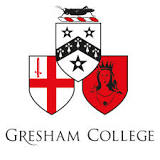
The eye has evolved to form a focussed image on the retina. The focussing is performed by the curvature of the cornea and by the natural crystalline lens.
Defects of this process, from development or from aging, leads to blurring of vision.
Emmetropia: (Gk = well proportioned) Normal sight
The normal eye focuses light rays from an object to form a point image. This is called emmetropia.
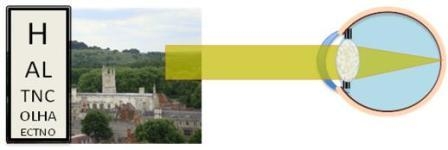
To focus for near the spherical power of the crystalline lens is increased by muscular effort of the ciliary muscles. This allows focus for near.
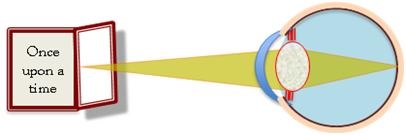
Defocus in front of the retina is called myopia. The power of the system is too high for the length of the eye. Often these eyes are long.
These individuals can focus for near without accommodating, no need for ciliary muscle effort.
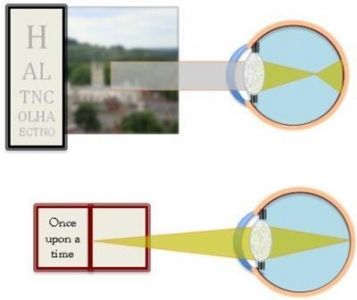
Defocus behind the retina is called hypermetropia. The power of the system is insufficient for the system. These eyes may be shorter than myopic eyes. The focussing power can be increased by changing the shape of the crystalline lens within the eye (accommodation). If the hypermetropia is mild, this mechanism is enough to form a focussed image in youth. However as the lens increases in size and stiffness with age the muscular effort to increase lens power is insufficient and the image becomes blurred.
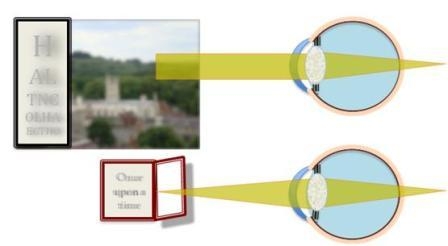
Even normal sighted but aging eyes have increasing difficulty to increase the lens power required to focus near objects. This is called presbyopia, and the condition was the major driving force for the development of spectacles as reading aids. The requirement became acute in the middle-ages with an aging literate population. The problem was compounded by the invention of printing and explosion of books.
Using a converging lens in front of the eye increases the focussing power of the system and allows a focussed image for near. This had been known for a long time, indeed Seneca is said to have read all the books in Rome with the aid of a glass bowl filled with water.
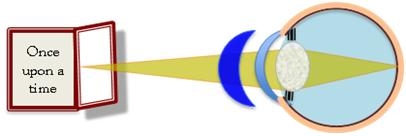
Increased power and magnification can be achieved by using a lens placed on the reading material (reading stone) or by holding a magnifying glass in front of an eye.
Both of these are unsatisfactory and the invention of spectacles in Pisa around 1280 was a major advance allowing hands free close work and extending the working age for scholars and craftsmen. Prior to this magnification with a lens placed on the page or held in the hand was used. Convex mirrors positioned appropriately were also utilised as demonstrated in medieval images.
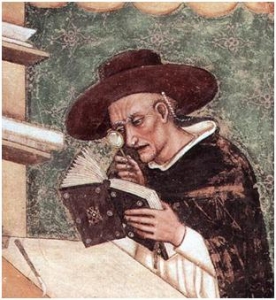
Friar Alessandro della Spina in St. Catherines Monastery Pisa, knew the elusive inventor of spectacles. He copies the design making glasses cheaply and widely available.
By 1300 the Regulations of the Venetian Guilds (Capitolare) were specifying standards about spectacle lens (roidi da ogli) manufacture and sale.
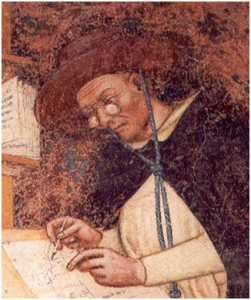
By the mid 14th century large quantities of spectacles were being ordered from Florence by the Dukes of Milan. At this time custom records show they were also imported on Dutch ships, into England by the thousands. Fifty years later records show local manufacturers with Dutch surnames working in Southwark and the oldest dated pair of spectacles were found near this museum (Museum of London) in a site that dates from 1440.
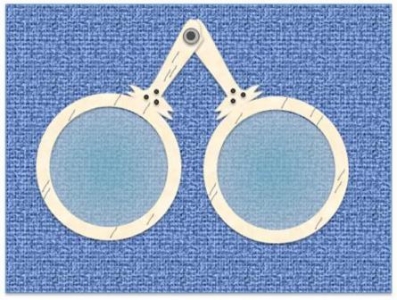
Rivet spectacles of the type found in London c1440.
Images of people wearing spectacles become increasingly frequent at this time, These paintings of spectacle holding or wearing were used to suggest academic prowess in powerful clergy or intellectual saints such as Jerome. As spectacle wearing became common, later medieval images show artisans and even peasants wearing glasses.
Florence and Venice became the major Italian centres for production, whilst Holland and then Nuremberg developed as major producers and innovators, particularly of wire frames.
The functional design of the rivet spectacle evolved into three variants and lasted for centuries. Side-pieces were invented by Edward Scarlett in 1727 to allow spectacles to be worn with wigs and to be pushed up when not required. Bifocals were produced for Benjamin Franklin by local manufacturers when he resided in London.
Printing and then the advent of newspapers pushed the demand for spectacles.
Designs waxed and waned with fashion. Sidepieces were temporarily dispensed with for a few decades as Pince-nez became popular. These medieval retro designs did not last beyond the first world war and spectacles evolved into a form as we know them today.
“Much has been written, ranging from the valuable to the worthless about the invention of eyeglasses; but when it is all summed up, the fact remains that the world has found lenses on its nose without knowing whome to thank.”